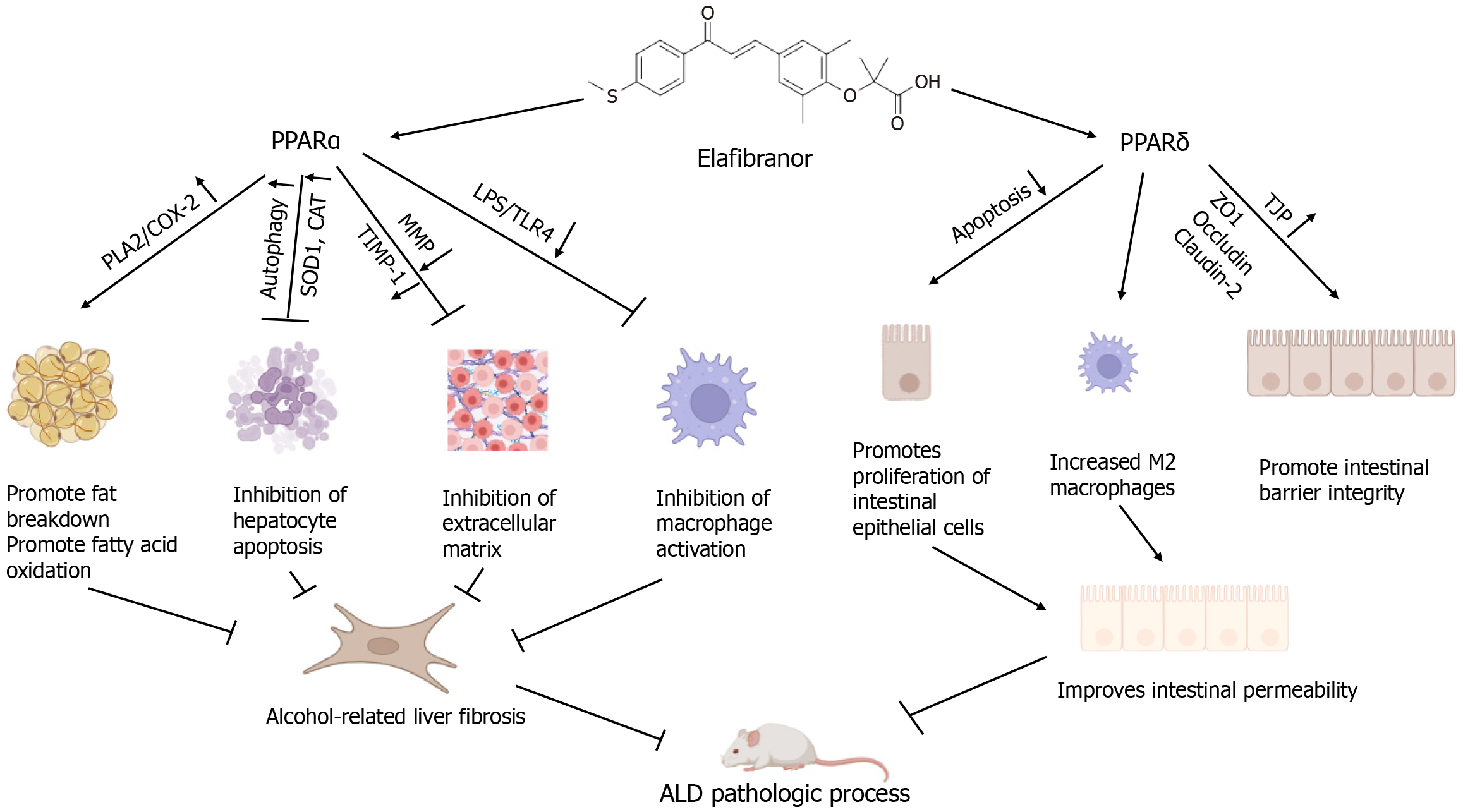Copyright
©The Author(s) 2024.
World J Gastroenterol. Nov 21, 2024; 30(43): 4660-4668
Published online Nov 21, 2024. doi: 10.3748/wjg.v30.i43.4660
Published online Nov 21, 2024. doi: 10.3748/wjg.v30.i43.4660
Figure 1 Effects of elafibranor on alcohol-associated liver disease in mice.
Elafibranor (EFN) activates peroxisome proliferator-activated receptor α (PPARα), inhibiting liver fibrosis in alcoholic liver disease through four primary mechanisms. First, it increases the expression of phospholipase A2 and cyclooxygenase-2, promoting lipid breakdown and fatty acid oxidation. Second, it enhances hepatocyte autophagy and increases antioxidant activity, specifically, superoxide dismutase 1 and catalase, thereby preventing hepatocyte apoptosis. Third, EFN reduces extracellular matrix production by regulating the activity of matrix metalloproteinases and tissue inhibitors of metalloproteinases. Finally, it suppresses macrophage activation by inhibiting the lipopolysaccharide/Toll-like receptor 4 signaling pathway. Moreover, PPARδ activation improves intestinal permeability by preventing intestinal epithelial cell apoptosis and promoting M2 macrophage polarization. It also enhances intestinal barrier integrity by upregulating tight junction proteins, such as zonula occludens-1, occludin, and claudin-2. PPAR: Peroxisome proliferator-activated receptor; ALD: Alcoholic liver disease; PLA2: Phospholipase A2; COX2: Cyclooxygenase-2; SOD1: Superoxide dismutase 1; CAT: Catalase; MMPs: Matrix metalloproteinases; TIMP-1: Tissue inhibitors of metalloproteinases; LPS: Lipopolysaccharides; TLR4: Toll-like receptor 4; TJPs: Tight junction proteins; ZO-1: Zonula occludens-1.
- Citation: Sun YQ, Wu Y, Li MR, Wei YY, Guo M, Zhang ZL. Elafibranor alleviates alcohol-related liver fibrosis by restoring intestinal barrier function. World J Gastroenterol 2024; 30(43): 4660-4668
- URL: https://www.wjgnet.com/1007-9327/full/v30/i43/4660.htm
- DOI: https://dx.doi.org/10.3748/wjg.v30.i43.4660









